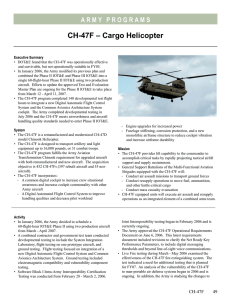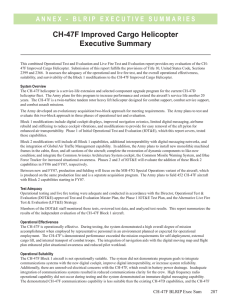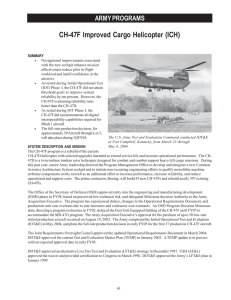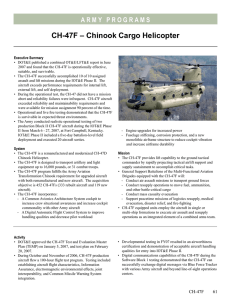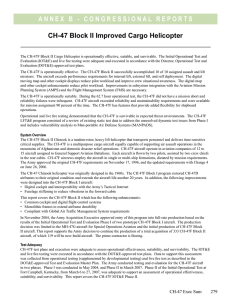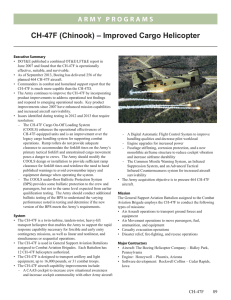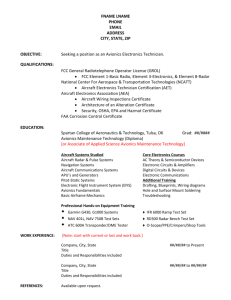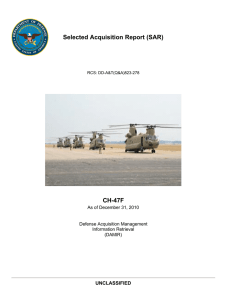CH-47F – Cargo Helicopter
advertisement
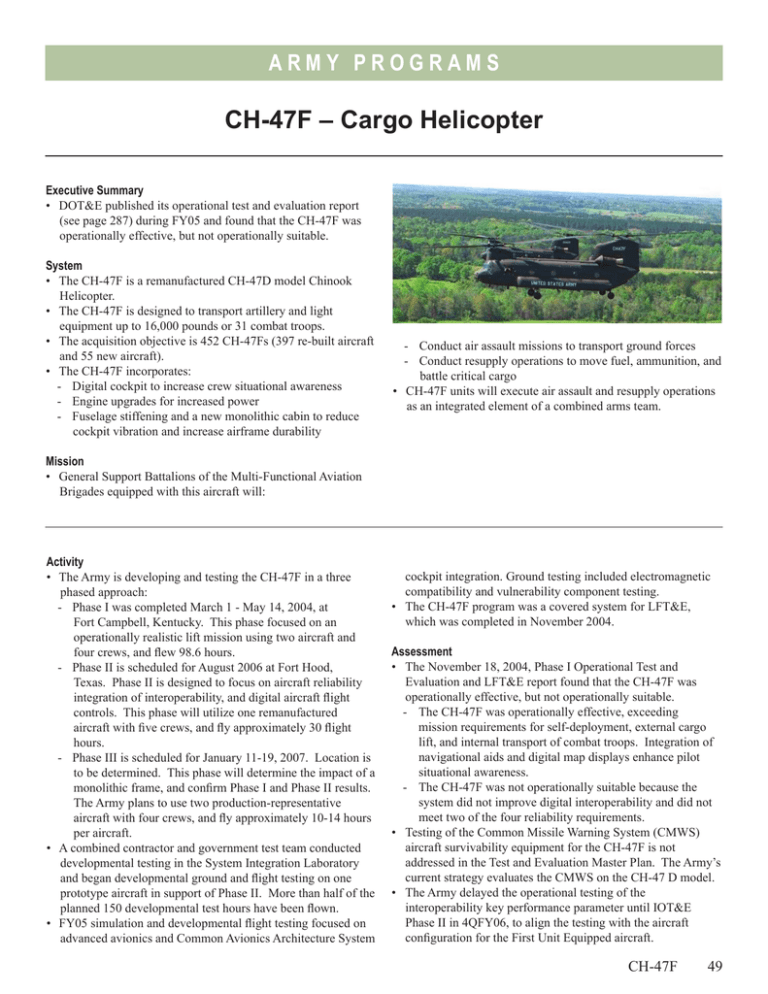
ARMY PROGRAMS CH-47F – Cargo Helicopter Executive Summary • DOT&E published its operational test and evaluation report (see page 287) during FY05 and found that the CH-47F was operationally effective, but not operationally suitable. System • The CH-47F is a remanufactured CH-47D model Chinook Helicopter. • The CH-47F is designed to transport artillery and light equipment up to 16,000 pounds or 31 combat troops. • The acquisition objective is 452 CH-47Fs (397 re-built aircraft and 55 new aircraft). • The CH-47F incorporates: - Digital cockpit to increase crew situational awareness - Engine upgrades for increased power - Fuselage stiffening and a new monolithic cabin to reduce cockpit vibration and increase airframe durability - Conduct air assault missions to transport ground forces - Conduct resupply operations to move fuel, ammunition, and battle critical cargo • CH-47F units will execute air assault and resupply operations as an integrated element of a combined arms team. Mission • General Support Battalions of the Multi-Functional Aviation Brigades equipped with this aircraft will: Activity • The Army is developing and testing the CH-47F in a three phased approach: - Phase I was completed March 1 - May 14, 2004, at Fort Campbell, Kentucky. This phase focused on an operationally realistic lift mission using two aircraft and four crews, and flew 98.6 hours. - Phase II is scheduled for August 2006 at Fort Hood, Texas. Phase II is designed to focus on aircraft reliability integration of interoperability, and digital aircraft flight controls. This phase will utilize one remanufactured aircraft with five crews, and fly approximately 30 flight hours. - Phase III is scheduled for January 11-19, 2007. Location is to be determined. This phase will determine the impact of a monolithic frame, and confirm Phase I and Phase II results. The Army plans to use two production-representative aircraft with four crews, and fly approximately 10-14 hours per aircraft. • A combined contractor and government test team conducted developmental testing in the System Integration Laboratory and began developmental ground and flight testing on one prototype aircraft in support of Phase II. More than half of the planned 150 developmental test hours have been flown. • FY05 simulation and developmental flight testing focused on advanced avionics and Common Avionics Architecture System cockpit integration. Ground testing included electromagnetic compatibility and vulnerability component testing. • The CH-47F program was a covered system for LFT&E, which was completed in November 2004. Assessment • The November 18, 2004, Phase I Operational Test and Evaluation and LFT&E report found that the CH-47F was operationally effective, but not operationally suitable. - The CH-47F was operationally effective, exceeding mission requirements for self-deployment, external cargo lift, and internal transport of combat troops. Integration of navigational aids and digital map displays enhance pilot situational awareness. - The CH-47F was not operationally suitable because the system did not improve digital interoperability and did not meet two of the four reliability requirements. • Testing of the Common Missile Warning System (CMWS) aircraft survivability equipment for the CH-47F is not addressed in the Test and Evaluation Master Plan. The Army’s current strategy evaluates the CMWS on the CH-47 D model. • The Army delayed the operational testing of the interoperability key performance parameter until IOT&E Phase II in 4QFY06, to align the testing with the aircraft configuration for the First Unit Equipped aircraft. CH-47F 49 ARMY PROGRAMS • Preliminary developmental testing results and test pilot feedback indicate that advanced avionics and the Common Avionics Architecture System cockpit enhancements including integration of navigational aids with digital moving map and flight plan, greatly improve handling and situational awareness. • Technical risks include system-level integration, digital interoperability, reliability, and monolithic airframe integration. Recommendations 1. The Army should conduct operational testing to evaluate anticipated changes to the CH-47F before fielding in 2007, and 50 CH-47F to demonstrate that the aircraft can meet interoperability and reliability requirements. 2. To adequately test aircraft survivability equipment effectiveness on the CH-47F, the Army should expand the CMWS initial operational test of the CH-47D to include the CH-47F. CH-47F CMWS is not currently scheduled to be tested, and the impact of enhancements such as the Common Avionics Architecture System and monolithic airframe remains unknown.

